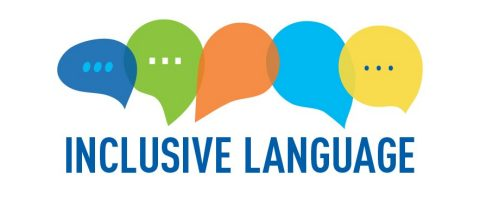Tips for using inclusive language in the workplace
Diversity and inclusion are hot topics. Yet, a majority (55%) are scared of saying the wrong thing, according to a survey, while over 50% still think Diversity and Inclusion are political correctness, says HR Director.

Inclusion leaders are afraid of getting it wrong
Diversity and inclusion are hot topics. Yet, a majority (55%) are scared of saying the wrong thing, according to a survey, while over 50% still think Diversity and Inclusion are political correctness, says HR Director.
Arguably, fear breeds inactivity. A report by Harvard Business Review says that D&I “leaders are so terrified about messing up and saying the wrong thing to all their stakeholders —employees, board members, funders, clients, customers — or the wider world via social media — that they’re paralysed into inaction.”
“Leaders are so terrified about messing up and saying the wrong thing to all their stakeholders…that they’re paralysed into inaction.”
Clear Talents believes that maintaining dialogue is key to embedding a culture of Diversity and Inclusion. Our online passport helps employees identify – and ask for – Reasonable Adjustments in the workplace. See www.cleartalents.info.
Here are our top tips for discussing diversity and inclusion in the workplace.
1. What is inclusive language?
Inclusive language “avoids the use of certain expressions or words that might be considered to exclude particular groups of people, esp. gender-specific words, such as “man”, “ mankind”, and masculine pronouns”, says Collins Dictionary
- Do: Let employees know it’s OK to challenge non-inclusive language.
- Don’t: Be afraid to get it wrong or let your emotions prevent you from starting the conversation. You may discover unconscious biases – be willing to address them. VERCIDA, for example, offers an Introduction to Unconscious Bias.
- Clear Talents helps create a digital passport that maintains a conversation with employees about their needs. Contact Us for more information.
2. Appreciate that inclusive language matters
Language matters. It “shapes, and reveals, people’s attitudes,” says Scope.
Using inclusive language creates a sense of belonging, says the ICAEW.
So, it’s essential to an individual’s sense of well-being. But it is also vital to business success. Deloitte’s Global Human Capital Trends research found that 79% of organisations agree that fostering a sense of belonging in the workforce is vital to overall business success.
- Do: Embrace inclusive language. Talking about disability, gender, sexuality, race and more reduces your fear of “getting it wrong” and encourages an open, inclusive culture.
- Don’t: Be afraid to admit it when you get things wrong. Learn and move on.
3. Do your research
Engage with diverse communities and include them in the process. They are the experts in the language they prefer – and what they find offensive.
Many websites offer Dos and Don’ts for their communities. For example, the National Autistic Society has a list of Dos and Don’ts for referring to autistic people respectfully.
Be aware that there will be diversity between communities. So, you should be specific and avoid having a one-size-fits-all policy around inclusivity and inclusive language.
- Do: Co-create your diversity and inclusion policies, including using inclusive language with people of all levels within your organisation.
- Don’t: forget to review policies. Language is fluid, and people’s preferences may change as time evolves.
Clear Talents helps create a digital passport that maintains a conversation with employees about their needs. Contact us for more information.
4. Mental Health: Mind your language
You may find you’re consciously choosing your words carefully, but inappropriate language can slip into everyday dialogue.
Do: Recognise the impact of mental health language and avoid using actual words that infer a diagnosis such as Bipolar.
Don’t: Use derogatory terms that stem from the context of mental health, such as ‘psycho’.
Mental health is often an invisible illness, and there’s a stigma attached to it.
Clear Talents’ digital passport enables employees to self-disclose, opening a dialogue with employers and HR departments. Find out more at www.cleartalents.info.
5. Knowledge sharing and allyship
Diversity and inclusion are everyone’s responsibility, including the language of work. You may wish to create guidelines or training around inclusive language.
Do: Co-create any guidelines with a diverse group. A company intranet could be a good place to share these guidelines. The Business Disability Forum, a not-for-profit, has a Free Inclusive Communication toolkit, which is an excellent resource.
For more workplace tips, follow ClearTalents on LinkedIn